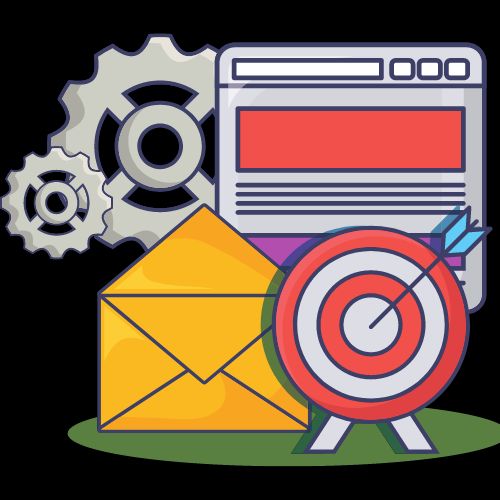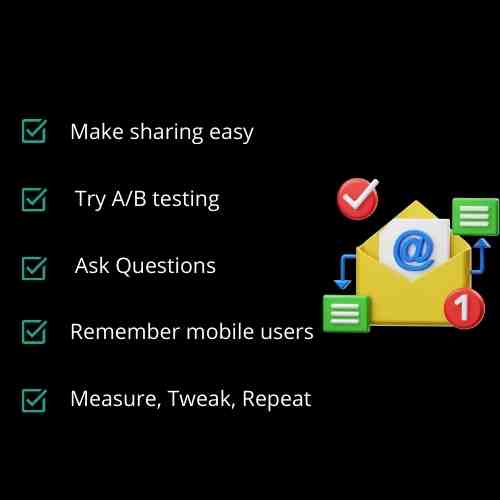A path to Email Marketing best practices

Email marketing is the profoundly effective digital marketing strategy of forwarding emails to prospects and customers. Efficient email marketing emails transform candidates into customers and turn one-time customers into permanent ones.
Email marketing has many benefits. It goes straight to a customer’s digital doorstep. It can be personalized, not just sent to a generic user basis. And it is so much more affordable than other marketing tactics. If you have a small business, then email marketing can be your best friend.
Whatever the scope of your business, here are ten email marketing best practices that will assist you in making the most of your campaigns:
- Personalize the email greetings:
Studies have found that personalized information always has a giant open rate. You might divide your email readers by the type of customers they are, but it shouldn’t be the first thing customer see in your brand messages. Personalizing, the greeting of your emails with your buyers first name: as it grasps the attention of each reader right away.
- Combine the subject line to the first line:
An email title line must be charming enough that it makes people click it. The subject line must be fleeting and narrative. An intriguing subject line helps you set the stage for your first line, as first lines seem in the preview text on a maximum of the email platforms.

- Set your time:
You cannot hit on a customer’s door at 4:00 in the morning. Naturally, you tap at the time when the favors of you getting success are higher. The perfect timing is one of the stables email marketing practices you have to deal with, there is no such ideal or right time for any business, but there are some basic guidelines which are needed:
– Avoid Mondays: people are usually stressed, sizing up for the week ahead. Therefore, they avoid spending their time reading an email that doesn’t address them.
– Avoid the center of the workdays and weekends: at middays, people get overloaded with work, and on weekends, they relished enjoying being unplugged. So, there are occurrences of your email getting neglected or your recipient getting annoyed.
– According to the research, open rates are highest early at 6:00 a.m., which is the best time to send emails.
- Keep it short and sweet:
There’s no need for a lengthy story in email marketing. Just have some touch of urgency; your reader is busy, and if they don’t get your information immediately, they won’t wait long before they hit delete.
The subject line must be 6-10 words only, and your email must be brief as well. If you want to make traffic to your website, plainly keep that in mind while building your email. Put most of your content on your site and use emails only to drive traffic there. Just don’t put much data in the email to make people visit your website.
- Be clear and conversational:
If your information is unclear, vague, or fuzzy to read like a proper brief, then nobody will take the time to figure it out.
So, make it personal and conversational. That is the glorious strength of email, after all; it’s not an advertisement or a skywriting. That is a direct conversation.

- Ask questions:
If you want your email to produce a response: a click, a visit to your website. So, one of the best email marketing best practices is to create an answer as you do in face-to-face communication: by asking questions.
Perhaps you are looking for feedback on your new merchandise, or maybe you want to entice a new feature on your website. Asking, “what do you think?’ or “can you give us your opinion?’ is an easy way to achieve your goal.
- Remember mobile users:
Studies have shown that 54% of email opens are on mobile devices. So, more than half of your reader population view your information on a small screen. Therefore, using a responsive mode program will help you improve your information for a mobile user.
- Try A/B testing:
Analyze, examine, repeat: the best marketers test their email marketing practices frequently. A/B testing means checking two ways of a message – one is A, the other is B – to check email marketing practices. A simple version of A/B testing splits your receiver list into halves, then use one subject line with the first half and a diverse subject line with the second. Then see which has the stables open standards. Or use substitute first lines, calls to action, or even types of capitalization to see how users respond.
- Measure, tweak, repeat:
Once you start to A/B test and measure, be ready to keep experimenting and tweaking in the months ahead. Gather as much data about your readership as you can while you measure: what subject lines get you the most opens?
- Make sharing easy:
You transfer it your reader read it and loved it. After this, for more comfort, help them share it. They’ll need some supervision and some inspiration. Simply putting a share button at the bottom of a message won’t do miracles. Make your emails more prominent. Offer some code or giveaway to new supporters and to those who share it further. If your business can’t provide giveaways or code, then directly ask for a share.
These are all the most reliable email marketing practices which work immensely with your email marketing initiatives and help you and your business to accomplish the driven goal.
